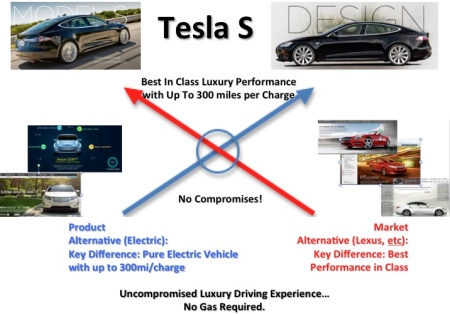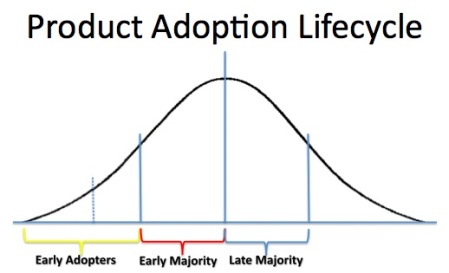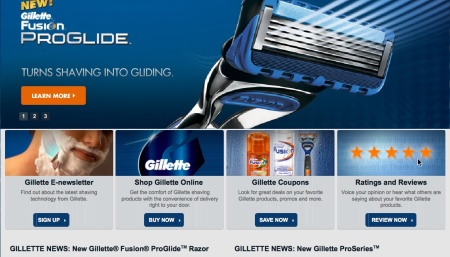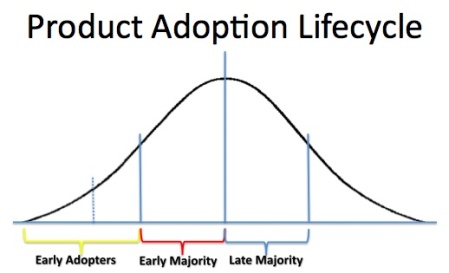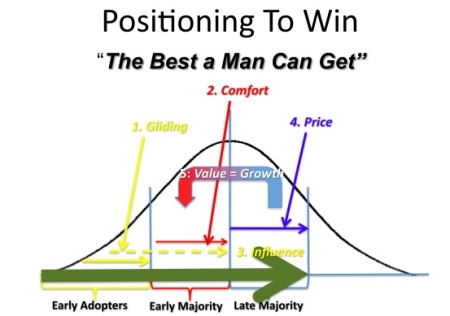Even though the tepid response to current all-electric vehicles like the Chevy Volt and Nissan Leaf indicate otherwise.
Here is quick review of the state of electric vehicles, as of Spring 2012…
“General Motors has temporarily suspended production of the plug-in electric Chevy Volt because of low sales. Nissan’s all-electric Leaf is struggling in the market. A number of start-up electric vehicle and battery companies have folded. And the federal government has slowed its multibillion-dollar program of support for advanced technology vehicles in the face of market setbacks and heavy political criticism.” – NY Times, The Electric Car Unplugged, March 24, 2012
A number of years ago, a friend turned me on to a quote by Peter Drucker that goes something like this… “The two drivers of business growth are Innovation and… Marketing.” This got to me and is a big reason I chose to get in the game of marketing way back when.
At our core, we are a big fan of “new stuff.” We love the challenge of taking new ideas to market, of creating or exploiting demand for products people don’t even know they want, need or love yet.
You Say You Got a Revolution!
In this regard, today is a feast for marketers with a taste for taking innovation on. That’s because we are living in a period of radical change powered by exponential growth of a variety of enabling capabilities. The most notable example perhaps is Moore’s Law and how the number of transistors on a chip have been doubling every 18-months since 1965. Starting gradually, almost flat, after enough doubling, the curve starts to climb and then goes like an elevator straight up if this compounding effect can be maintained.
There are a number of other enabling technologies entering this supercharged phase simultaneously including Bandwidth, Storage and Information creation itself as indicated by the Digital Universe Study conducted by IDC in association with storage leader EMC will attest.
The Potential of Innovation: A Vacuum Effect That Pulls Innovation Forward
Add it all up and we are living in a revolutionary period that is driving the Potential of Innovation, on the grandest scale.
What do we mean here by Potential of Innovation? Simply put, it’s when a Capability has entered the latter or steepest phase of the exponential growth, and the deployment or Utilization of this potential is lagging well behind, as the chart above indicates.
Over the years I have heard technologists describe this gap as a vacuum, a vacuum that by its very nature must be filled… and from what I can tell, the best of what fills this empty space can be boiled down to vision, creativity and innovation.
One company that to us most exemplifies these characteristics is Tesla Motors and most especially the Model S, their new vehicle that is now gearing up for production. With over 7,000 advance orders already on the books for this gorgeous pure electric vehicle, we believe the Tesla S will be a game changer and the first vehicle to truly fulfill the promise of widespread adoption of a car that is not powered in any way by the internal combustion engine, New York Times notwithstanding.
Here’s why?
Again and again we hear about energy efficiency and “green values” relative to the environment and planet we all live in. There is no doubt there is a much higher level of consciousness than ever before. The only problem is, although we may expect or want companies to be good environmental citizens and follow best practices, we as consumers don’t necessarily want to pay extra for it. And for all the talk about energy-efficient cars, the reason we don’t have them now is that customers traditionally follow the money… lower gas prices means we accept the status quo, high prices mean that we cut back. In other words we cut down consumption when fuel cost is high, but invariably resort to our old gas guzzling ways when prices go down with no real alterations made to efficiency standards.
Electric Vehicles: Niche Category…
What this means is that true electric cars appeal by definition to the niche we call Early Adopters, who are into energy efficiency and green tech because they believe in it and are quite willing to pay extra and buy before anyone else to support this belief. And Hybrids? These vehicles aren’t disruptive in any way except that they get good and often great gas mileage. They do prove however there is an audience for energy-efficient products.
This is what makes what Tesla is doing very interesting.
Tesla’s first car the Roadster has been on the market for a couple of years and has sold, if the public account is accurate, around 10,000 vehicles at $100,000 each. These cars are not only pure electric, they are also a very fast, super premium product. In other words, the Roadster is a high performance (0 to 60 miles per hour in 3.6 seconds) sports car that can perform in a league with a Ferrari or a Porsche, that just happens to be electric.
As far as markets go, this is an extremely limited audience by any measure. However, the Roadster is a clever first step from a strategic marketing perspective, as it begins to alter the accepted perception that electric cars by definition don’t measure up to those powered by internal combustion engines.
One of the other objections to electric vehicles overall is that they necessitate new driving habits and expectations that American car buyers have been slow to accept, if at all. The perception is that electric cars are slow, don’t drive as well, cost more than they are worth, and what’s worse, make driving a structured activity posing the risk that the batteries may run out of juice mid trip. This is not a recipe for wide-spread adoption in the US market, certainly.
You can see this reality playing out right now with the Chevy Volt:
The Volt has a range of approximately 35 miles, when the gasoline powered generation system kicks in, so drivers don’t have to worry about getting stuck. It doesn’t look bad, but politics notwithstanding, with a pure electric range of 35 miles a charge, it is compromised and production has stopped, at least for now.
And then there is the Nissan Leaf.
The Leaf looks funny, and with a range of 65 miles seems too complex and different for the mainstream car buyer. Again, this is a compromised driving experience, something only an early adopter electric car buyer could and would love.
… Or Mainstream?
The Tesla S is clearly different.
As you can see it’s beautiful. I’d put it next to a Lexus, Mercedes or Infiniti anytime. It also boasts great performance for a luxury sedan (0 to 60 in 5.6 seconds), can go up to 300 miles on one charge, and because the drive train is all-electric, it opens up cabin space and also lowers the center of gravity for a great driving experience. In other words Tesla S is great luxury sedan designed from the ground up that is electric and not the other way around.
In fact, most drivers can get back and forth to work for a week on one charge.
Marketing is a Key Enabler
The question now is, how can we position this vehicle so that the mainstream car buyer get’s it? As it turns out Marketing has a set of tools that can help us figure it out.
Here is the current positioning from an outside looking in point of view:
Tesla is beautiful luxury car that performs better than any other sedan on the market, including Mercedes, Lexus or Infiniti. It (base model) costs $50,000 gets up to 300 miles a charge, costs a few hundred dollars a year to run and is all-electric.
This can be reflected in Tesla’s own taglines:
- Performance for the 21st Century
- Electric from the Ground Up
- Zero Emissions. Zero Compromises.
Not bad…
The issue here is these core positioning tag lines are not connected directly, and the umbrella line of “Performance for the 21st Century” forces us to define what that means to us. And since there is no “Mainstreet” context for reference, the “Electric from the Ground Up” with “Zero Emissions and Zero Compromises” then is clearly focused to Early Adopters, which is fine except that it misdirects the overall value proposition away from the mainstream audience and dilutes the position that is inherent to the product to engage the larger “Majority” audience and therefore fulfill its true sales potential.
Positioning for Success
Let’s use our double vector model to break this apart and see what we can do re-position the Tesla Model S for even greater success.
Vector #1: Luxury Sedans
In this case, the Market Alternative is Luxury Cars.
The singular “value vector” in red comes down to best luxury performance in a world dominated by leading brands such as Lexus, Mercedes and Infiniti among others.
With a gorgeous bottom to top design with acceleration from 0-60 in 5.3 seconds and amazing handling, the Tesla S can clearly outperform its gas-powered luxury sedan counterparts.
Vector #2: Electric Cars.
As we can see, there are some stunning differences especially related to design, but here we are looking for a more logical or mental key difference, and what really sticks out is the range. Model S gets up to 300 miles a charge, the others not even close. The Volt goes so far as to integrate a gasoline powered generator that kicks in after 30 miles, but that is an obvious compromise. Tesla does not compromise here. This is where Tesla’s no compromise position noted above obviously comes from.
“X” Marks THE Position… Where Differentiation Matters
Add the two up and Tesla can now make a statement like this:
Add it all up: The Tesla S is designed from the ground up to be a beautiful luxury sedan that just happens to be all-electric. And because we make no compromises, Tesla S not only outperforms any gas-powered sedan in terms of pick up and handling, it also gets up to 300 miles a charge so you drive everyday and never fill up at the pumps again.
Now let’s revisit our tag lines:
Nissan Leaf boils it down this way – “the new car. 100% electric. zero gas. zero tailpipe.”
Chevy Volt – “Volt offers the fuel efficiency and forward-thinking you’d expect from Chevrolet.”
Tesla Model S – THE Luxury driving experience with no compromises, no emissions and up to 300 miles per charge.
Bottom Line: Now, what car do you want to buy? And I am not just directing this question to Early Adopters, who will validate the product, but mainstream car buyers who will elevate this 21st Century Silicon Valley startup into a real player on the auto manufacturing stage with a product category that for the moment at least, is given up as lost.
Marketing and Innovation: Where Everything IS Possible
On one level this is monumental achievement, but for someone like Tesla’s Elon Musk, whose other company SpaceX actually launches stuff into orbit around the earth, this is a manageable task. Tesla clearly demonstrates that when marketing and innovation come together, everything is possible.






